SparkyBuddy
Group project to design a mobile app that meets a real-world need.
Duration
3 weeks
Key Skills
User interviews, ideation, material design guidelines for mobile, prototyping, usability testing and iteration, wireframing, mid-fidelity prototypes, AB testing, usability testing, responsive web design, interaction design, Kanban boards and teamwork.
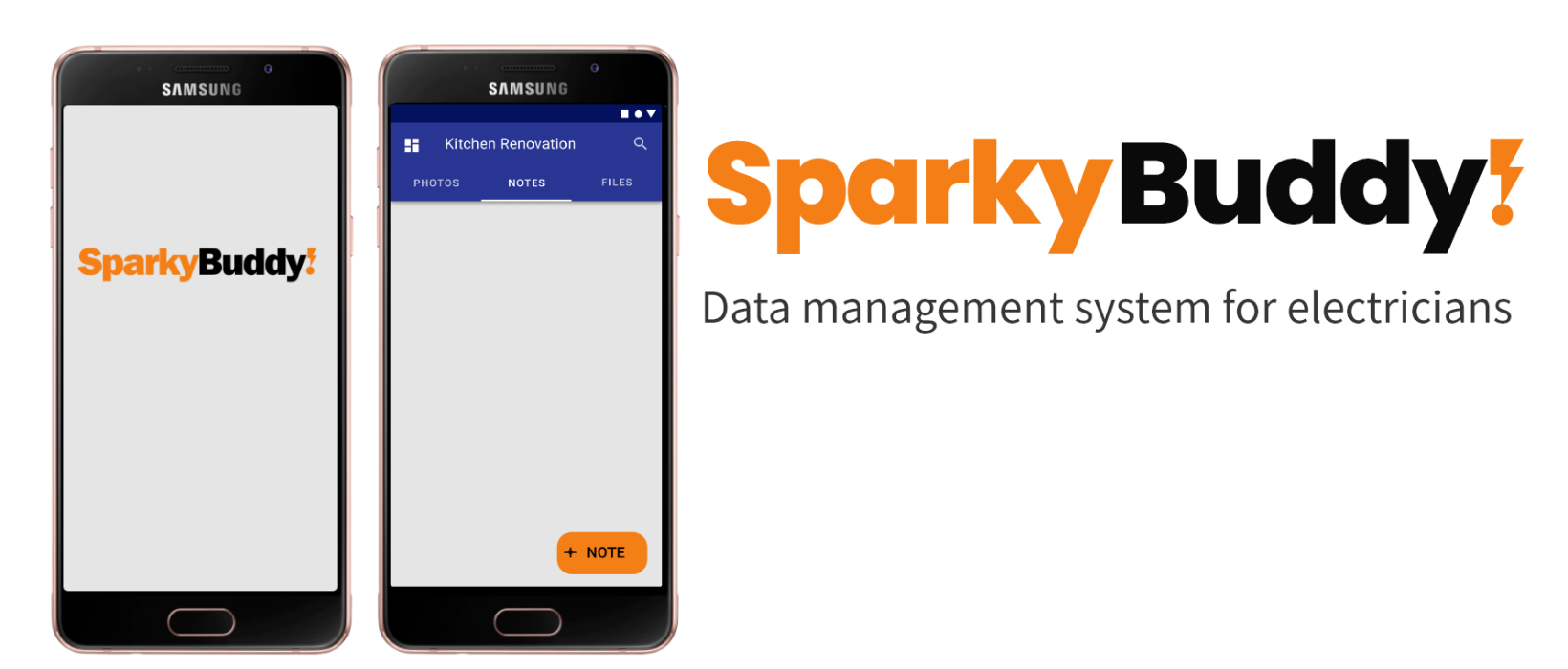
Tools
Miro, Figma, Adobe Xd, Zoom, Google Suite, Trello
The Problem
User research indicated that many electricians rely on their memory, hand written notes and photos to capture data to plan, perform and evaluate their work. This is an unreliable process and it could be catastrophic if data is lost. How might we assist electricians to manage their data at every stage of a project?
The Solution
A mobile app which seamlessly gathers data and keeps it in one place, backed up to the cloud. The app is paired with a web front end interface where the user can download their data to their personal computers for more detailed analysis. Due to the scope of the project, we only designed the mobile app in detail.
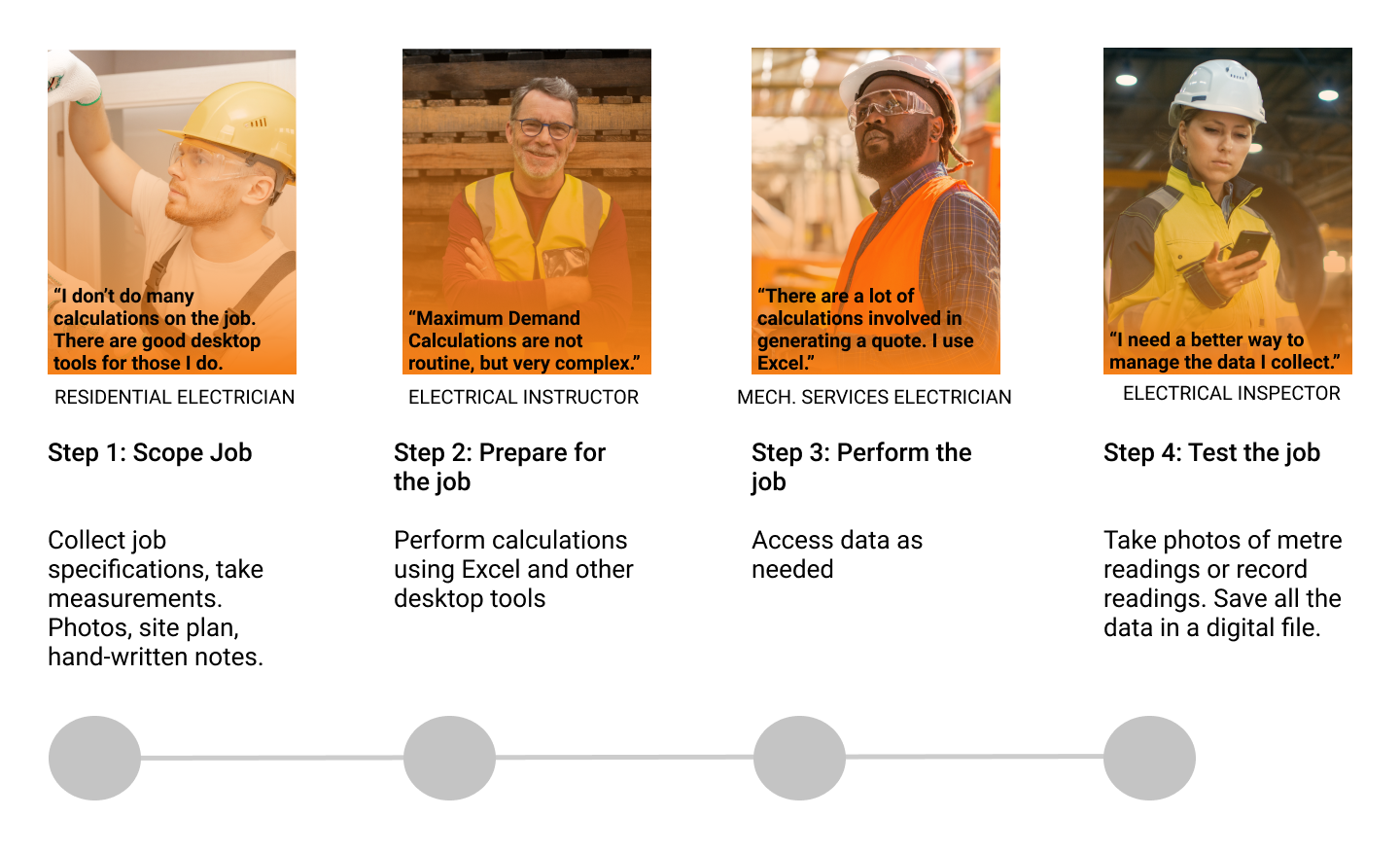
User Research & Definition
We performed 5 user interviews with 4 electricians and 1 electrical engineer, individually over Zoom. We wanted to better understand the process electricians undergo at every stage of their workflow to uncover pain points and opportunities for streamlining. We discovered that most electricians divide their work between on-site and off-site (in an office or at home). On-site, they collect data such as job specifications and measurements and off-site, they use the data collected to generate quotes and perform calculations to plan the work using specialised desktop tools. Although we uncovered many pain-points, one that was common to all was the fact that they didn't have an easy way to collect data on-site and keep it safe and organized in order to be able to access this data off-site in a way that avoids double-handling of the data. We also completed a competitor analysis which showed us that there weren't any existing dedicated data management tools for electricians.
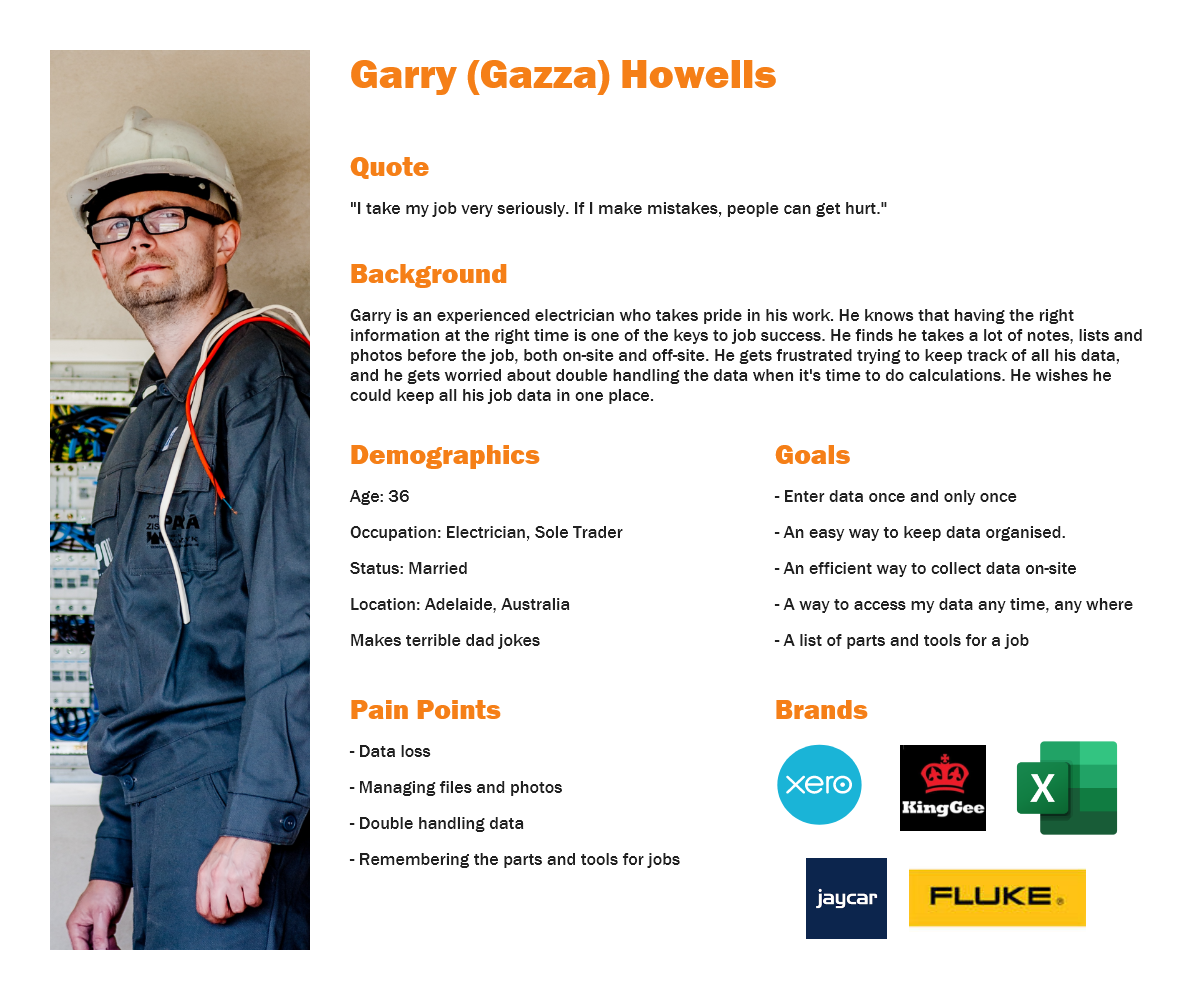
Ideation
In order to generate feature ideas for solving the issue of data management for electricians, we completed an "I like, I wish, what if" exercise and then organized the top contenders in a priority matrix. We then set about demonstrating the proposed user flow using a storyboard, journey map and later a detailed user flow.
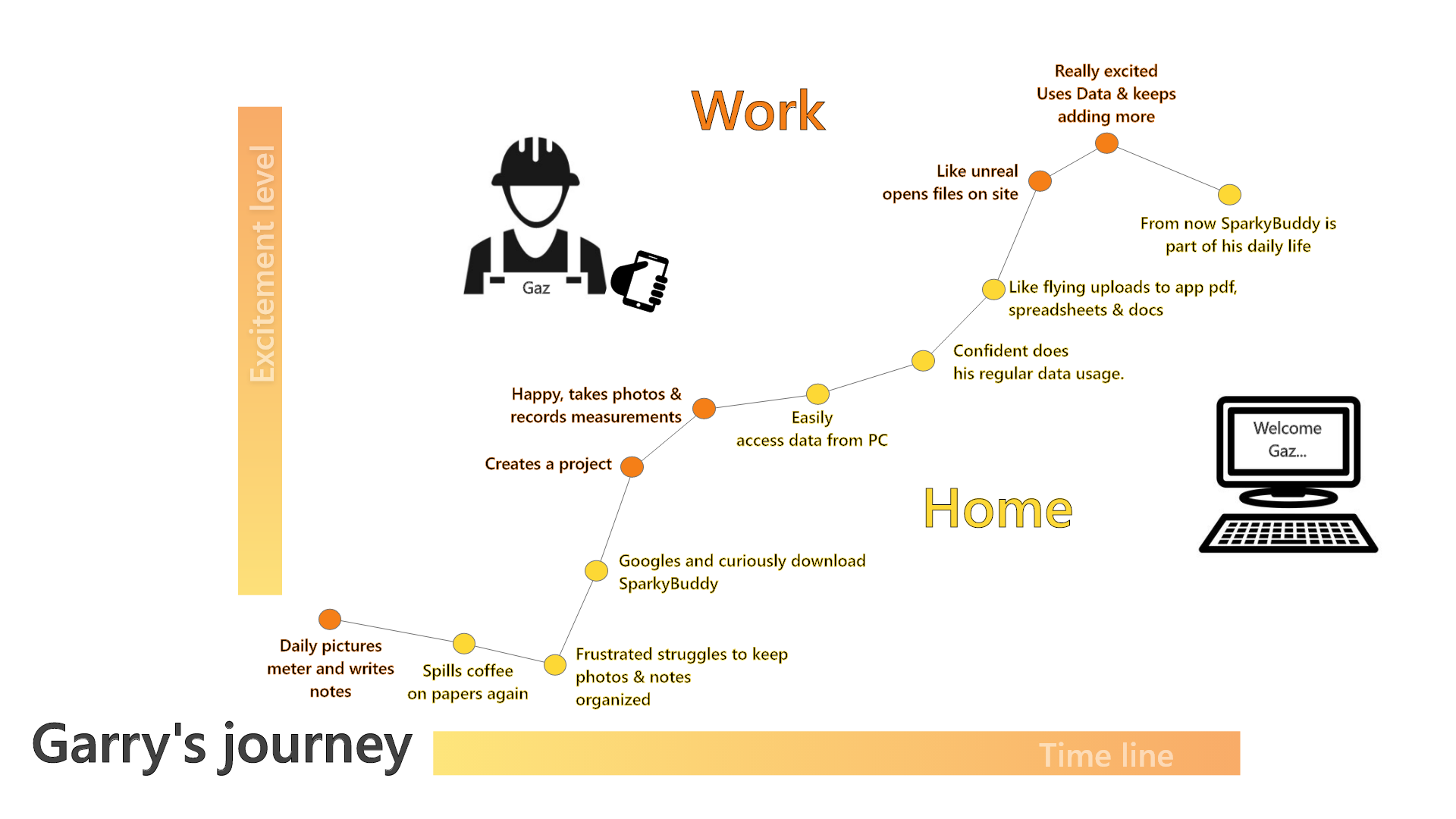
User journey map showing how the persona's work is benefitted by SparkyBuddy
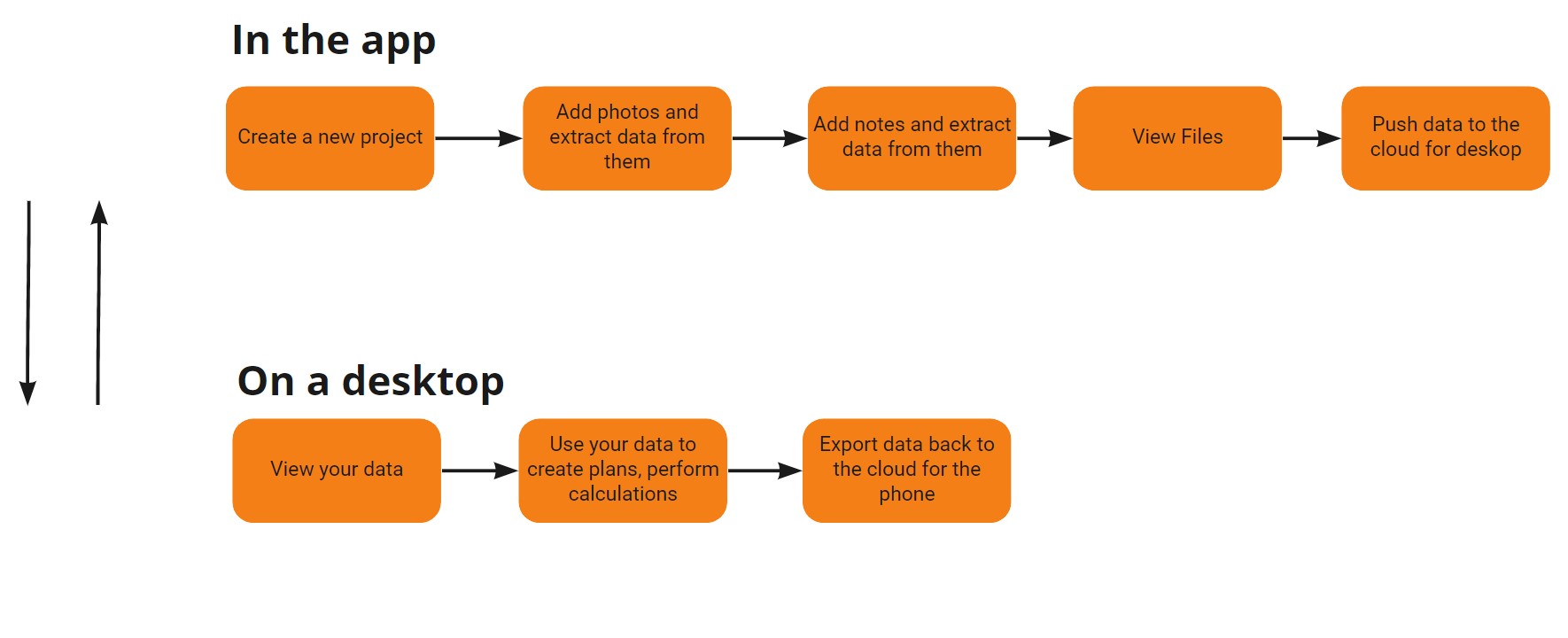
Very-simplified version of the more complex user flow we created in preparation for prototyping. Note, due to the project scope, we only prototyped the mobile part of the user flow above.
Wireframing & Prototyping
We individually created wireframes to fit the project requirements, then together identified the best parts of each design in order to create a prototype for usability testing. There were some aspects of the design we weren't sure about, so we decided to AB test those features at the same time.
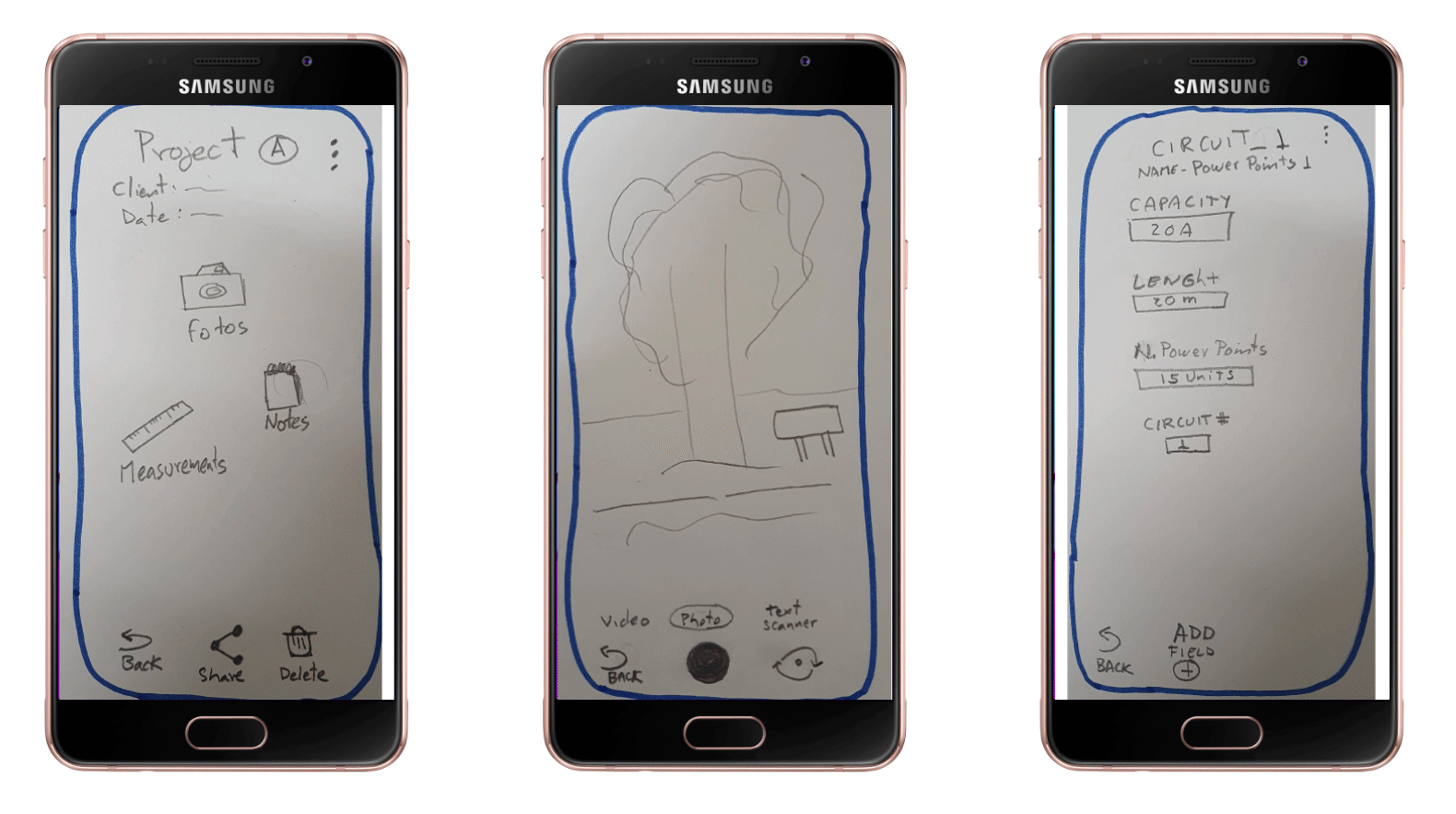
Animation showing the iterative process from wireframe to final design.
A/B and Usability Testing
We created 2 prototypes varying across three areas: 1. Data collected and stored in separate tabs depending on type of data (A) and data collected on one screen with a single Floating Action Button with a speed-dial (B) 2. Full-screen dialogs (A) and normal dialogs for adding data (B) 3. Adding measurement data in a structured form (A) and adding in a freeform textbox (B) We tested 10 users and exposed 5 users to Prototype A and five to Prototype B. All users completed the same tasks, below. We timed them as they undertook each task and looked for qualitative indications of user experience through observations and questions. 1. Creating a project 2. Adding a photo, renaming it and marking it up. 3. Adding a measurement (a data point) 4. Viewing a file
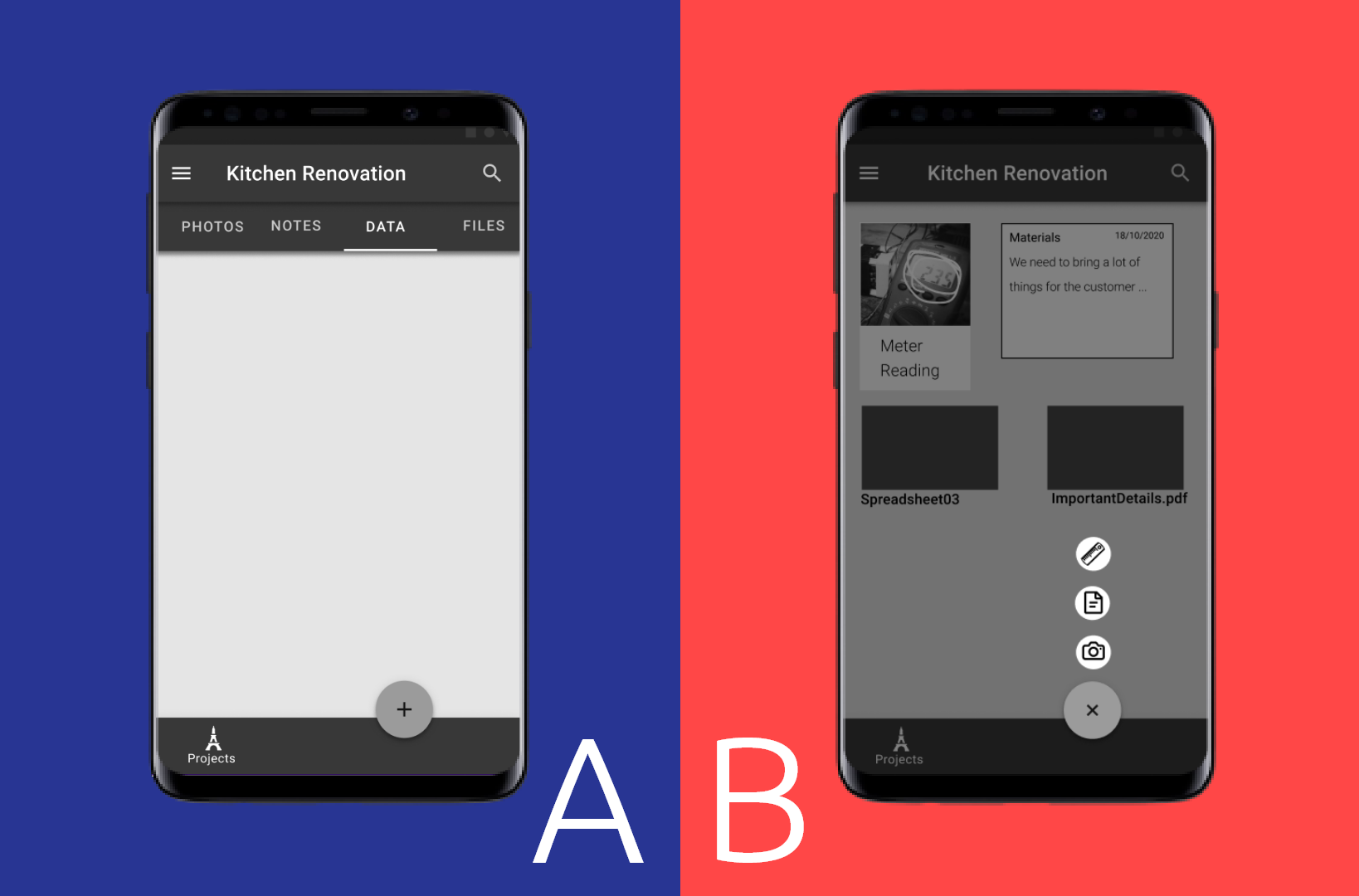
Iteration
The major insight of user testing was that the term "data" was confusing to users. "Measurements" or a ruler icon were considered clearer, but many users still wondered why they couldn't add measurements using the freeform notes functionality.We had initially kept these separate, as we had perceived them to be different data types, but we realised that it would be technically possible to display them together and for the app to detect which data type they are behind the scenes. In addition, the app could parse the data (that could be entered via speech to text) for relevant data points and then display the data in a table for easy access in tools like Excel.
The Final Design
The final product allows users to enter details about a job name, location and date to create a project. Using their camera they can take photos of jobs to be done and mark-up the photo to add meaning, such when taking a photo of site plan, though could indicate the location of a job. They can take notes about job specifications and take measurements, either through text input or speech to text functionality. The app will then parse the text to extract data points that can be displayed in a table and exported to programmes such as Excel or other dedicated tools, where electricians prefer to do the heavy lifting of the calculations side of their job. Once they've completed work on their desktop, we envisioned that they could save their files to a desktop app which would push, via the cloud, their work back to their mobile app so that they could easily share information with their clients and colleagues on the job.
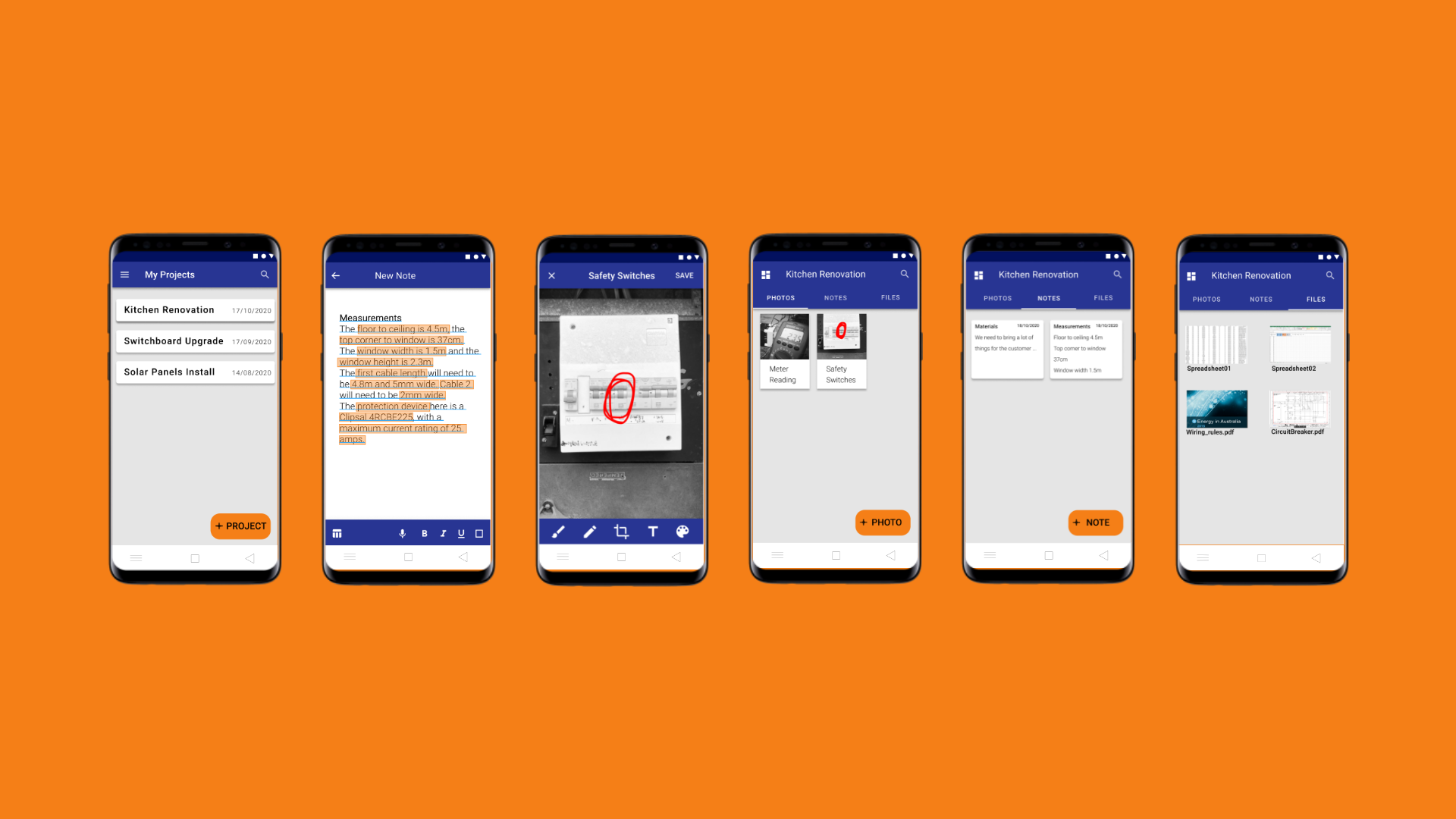
Conclusion & Next Steps
We were excited to solve a real-world problem for a group of professionals who are perhaps under-served in their access to domain-specific tools. Choosing a technical field was sometimes challenging. For example, it was a bit difficult to find electricians to test our prototype at short notice (though we did succeed) and we feel that to truly know if this product meets the needs of electricians, we would need to go through more rounds of user testing with electricians and iterate our design in response. We have a lot of extra features in mind to test: features to help electricians in teams collaborate and share their work, project management for bigger projects involving other tradespeople. Another specific tool would be the ability to geolocate items on site plans. Some potential challenges that we might face if we were to continue on this journey would be, once again, the issue of access to domain specific user tests and also the issue of monetization. Our user interviews suggested that sole traders doing domestic work would be reluctant to pay for a product unless it radically improved their work experience, and even then wouldn’t be willing to pay much. We hoped that the simplicity of the design would make the product relatively easy to implement and therefore, financially viable, but that remains to be seen.
View Figma prototype.
Go to the next case-study >

